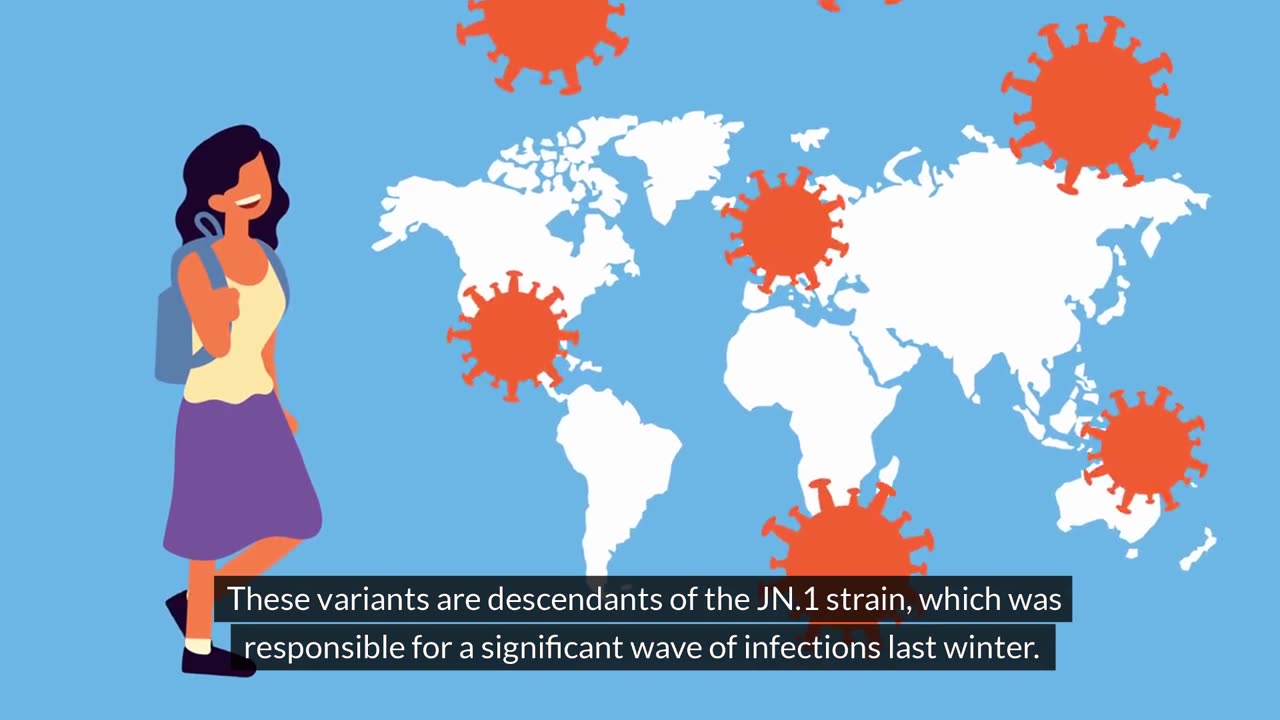Premium Only Content

COVID Summer Wave Grows, Especially in the West, with New Variant LB.1 on the Rise
A New Wave of Concern
As summer heats up, so does the COVID-19 infection rate. The latest data from the Centers for Disease Control and Prevention (CDC) indicates a troubling trend: a new wave of COVID-19 cases is emerging earlier this year, particularly in the western United States. This spike is driven by the rise of a new variant, LB.1, which may soon become the dominant strain. What does this mean for you and your loved ones? Stay tuned as we delve into the details and implications of this growing summer wave.
## The Early Warning Signs: Wastewater and Emergency Room Data
### Wastewater: The Canary in the Coal Mine
For months, wastewater monitoring has served as an early indicator of rising COVID-19 cases. In the western region of the U.S., virus detections in wastewater have surged, nearing the CDC's "high" infection risk threshold. This method of tracking viral load offers a crucial glimpse into community spread before clinical cases escalate.
### Emergency Room Visits: A Surge in Numbers
Emergency room (ER) data corroborates the wastewater findings. In Health and Human Services (HHS) Region 9—which includes Arizona, California, Hawaii, and Nevada—COVID-19-related ER visits have risen to 1.23%, the highest since early February. This uptick underscores the growing burden on healthcare facilities and the need for vigilance as we navigate this new wave.
## The Rise of New Variants: LB.1 and KP.3
### Understanding LB.1 and KP.3
As COVID-19 cases climb, scientists are closely monitoring two new variants: LB.1 and KP.3. According to the CDC's recent projections, KP.3 accounts for roughly a third of new cases nationwide, while LB.1 comprises 17.5%. Both variants are displacing their predecessor, KP.2, suggesting that LB.1, in particular, could become the dominant strain.
### The Genetic Lineage
All three variants—KP.2, KP.3, and LB.1—descend from the JN.1 strain, which drove a significant wave of cases last winter. The rapid rise of LB.1 and KP.3 highlights the virus's ongoing evolution and its ability to adapt and spread, posing continuous challenges for public health efforts.
## Impact on Public Health Strategies
### Vaccine Adaptations
The emergence of LB.1 and KP.3 has prompted a reevaluation of vaccination strategies. The Food and Drug Administration (FDA) recently decided to select KP.2 for the updated Moderna and Pfizer vaccines slated for this fall, despite initially considering JN.1. This decision, based on the need to align vaccines with circulating strains, aims to provide optimal protection, even if based on less-than-ideal evidence.
### Anticipating Future Variants
Dr. Peter Marks of the FDA emphasized the importance of flexibility in vaccine development, noting the need to adapt quickly to new variants. The ongoing monitoring of KP.3 and LB.1 will inform future updates and ensure that vaccines remain effective against evolving threats.
## Regional Trends and Health Implications
### The Western U.S.: A Hotspot
The western United States, particularly states like California and Nevada, are experiencing the fastest rise in COVID-19 cases. Nursing homes in these regions have also seen a spike in cases, signaling the need for increased precautions in vulnerable populations.
### Nationwide Concerns
While the West currently leads in case numbers, the trend is not confined to this region. The entire country is seeing a drift upwards in infections, with no states reporting a slowdown. This nationwide increase demands a unified response and heightened awareness as we move through the summer months.
## Expert Insights: Navigating the New Wave
### Learning from Past Patterns
Historically, COVID-19 surges have followed a spring lull, but the timing has varied. Last year's wave peaked in late August, coinciding with new vaccine rollouts. This year, however, the increase has started earlier, challenging public health officials to stay ahead of the curve.
### Balancing Caution and Normalcy
Experts like Dr. Ruth Link-Gelles from the CDC stress the importance of adapting our responses based on evolving data. Unlike predictable flu and RSV seasons, COVID-19's patterns remain fluid, requiring ongoing vigilance and flexibility.
## Conclusion: Staying Informed and Prepared
As we face another summer wave of COVID-19, driven by new variants like LB.1, it is crucial to stay informed and prepared. The situation underscores the need for continued vigilance, timely vaccinations, and adaptive public health strategies.
Thank you for reading HealthWatch. If you found this article informative, please like, share, and subscribe to our channel for more updates on COVID-19 and other health topics. Your engagement helps us bring you the latest and most relevant information. Feel free to leave your thoughts and questions in the comments below. Together, we can navigate these challenging times with knowledge and resilience.
-
 LIVE
LIVE
Dr Disrespect
8 hours ago🔴LIVE - DR DISRESPECT - ARC RAIDERS - AGAINST ALL DANGER
1,434 watching -
 1:21:57
1:21:57
Roseanne Barr
19 hours ago“Central Banking: The Hidden Empire” W/ Mel K | The Rosenne Barr Podcast #122
107K85 -
 LIVE
LIVE
SpartakusLIVE
6 hours agoTOXIC Solos on ARC Raiders || Friday Night HYPE - WZ or Redsec Later?
77 watching -
 1:19:42
1:19:42
Russell Brand
4 hours agoTHE LEFT’S NEW STAR — What Zohran Mamdani’s Victory Really Means - SF647
118K31 -
 1:42:32
1:42:32
vivafrei
9 hours agoLive w/ Stanislav Krapivnik - Military and Political Analyst on Russia, Europe & Beyond!
58.2K18 -
 LIVE
LIVE
LadyDesireeMusic
2 hours ago $0.01 earnedYour Daily White Pill- Music & Convo
146 watching -
 LIVE
LIVE
StoneMountain64
5 hours agoBattlefield REDSEC UNSTOPPABLE WIN Squad
67 watching -
 1:40:36
1:40:36
The Quartering
5 hours agoKimmel Pulls Show Mysteriously, Youtube Collapse? & Much MOre
110K59 -
 LIVE
LIVE
cosmicvandenim
5 hours agoCOSMIC VAN DENIM | OFF CHARACTER | WARZONE PRACTICE
70 watching -
 2:08:06
2:08:06
The Robert Scott Bell Show
5 hours agoMike Adams, Brian Hooker, Live From Brighteon Studios in Austin Texas, Kids Triple Vaccinated, Blood Sugar and Autism, Candy Fed to Cows, Nutrition Reform - The RSB Show 11-7-25
41.5K7